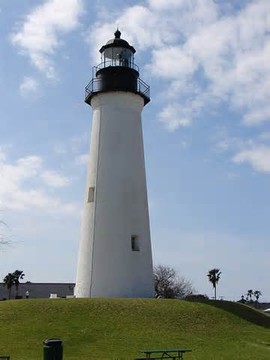Port Isabel Lighthouse
Introduction
Text-to-speech Audio
Images
Of sixteen lighthouses constructed along the Texas coast, Port Isabel Lighthouse is the only one now open to the public.

Backstory and Context
Text-to-speech Audio
This area, long known to coastal Barrado Indians, was discovered by the Spanish explorer Pineda in 1519 while on a mapping expedition of the Gulf shores. Spanish control was established here in the late 1700s, as ranchers began moving into the vicinity from Mexico. By the 1830s a small settlement El Fronton de Santa Isabella, served as headquarters for a large Mexican ranch owned by Don Rafael Garcia.
The Point Isabel region passed almost uneventfully through the period of the Texas Republic to statehood, but it gained widespread attention in 1846. In late April, General Zachary Taylor moved his troops into this area north of the Rio Grande when hostilities between the United States and Mexico seemed imminent. Within two weeks war had begun. The opening battles of Palo Alto and Resaca de la Palma were fought north of present-day Brownsville. Point Isabel received the wounded form these initial struggles and served as an American supply depot for the duration of the war.
The point continued in use after the war to supply two military stations on the Rio Grande–Fort Brown and Ringgold Barracks. Because of the heavy shipping traffic through Brazos Santiago Pass to Point Isabel, a navigational light became a necessity. Land at the point was made available by the War Department, money was authorized by Congress, and construction of a lighthouse was underway by 1851. Two years later, the brick tower had been completed and was topped by a stationary white light that could be seen for almost 16 miles. The Civil War brought armed conflict once again to Point Isabel. Confederate forces held this area in the early stages of the war but gave way in 1863 to Federal troops who were sent to strengthen the blockade on Southern shipping. Both sides used the lighthouse as an observation post. At nearby Palmetto Ranch, Union and Rebel soldiers clashed on May 13, 1865, more than a month after General Robert E. Lee’s surrender at Appomattox, in what has since been acknowledged as the last battle of the war.
